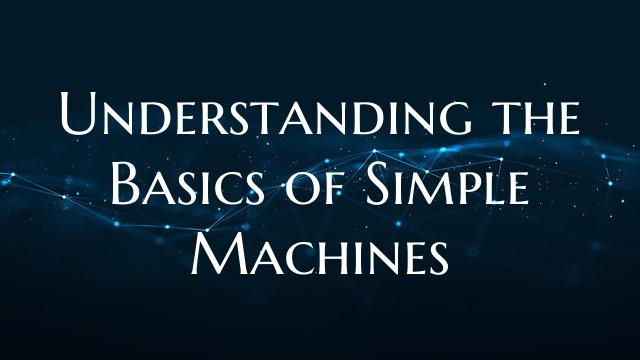Understanding the Basics of Simple Machines
Simple machines are essential tools that make our everyday tasks easier by allowing us to apply a small force to accomplish a larger amount of work. These basic machines are the building blocks of more complex machinery and are fundamental in various industries and aspects of daily life.
There are six main types of simple machines: the lever, the wheel and axle, the pulley, the inclined plane, the wedge, and the screw. Each of these machines operates on the principle of mechanical advantage, which allows us to multiply our force or change the direction of the force applied. Understanding how these simple machines work can lead to efficient problem-solving and innovation.
The lever is one of the most common simple machines and consists of a rigid bar that pivots around a fixed point called the fulcrum. By applying a force at one end of the lever, a larger force can be exerted at the other end to lift or move heavy objects with less effort. Examples of levers include seesaws, crowbars, and scissors.
The wheel and axle leverage rotational motion to make work easier. A wheel is a circular object that rotates around a center point (the axle). By applying force to the wheel, we can move objects or vehicles with less friction and effort. Examples of wheel and axle systems include car wheels, bicycle wheels, and doorknobs.
Pulleys are simple machines that consist of a grooved wheel and a rope or cable. By looping the rope around the pulley, we can lift heavy loads by pulling down on the rope with less force. Pulleys are commonly used in construction, elevators, and cranes to lift and move heavy objects vertically.
The inclined plane is a sloping surface that allows us to raise or lower objects with less force than lifting them straight up. By using a gentle slope, such as a ramp, we can move heavy objects like furniture or vehicles with less effort. Inclined planes are commonly found in wheelchair ramps, slides, and escalators.
Wedges are simple machines with a sharp edge or pointed tip that can split objects apart. By applying a small force to the wide end of the wedge, the pointed end can exert a large force to separate materials like wood or metal. Examples of wedges include knives, axes, and chisels.
Screws are another type of simple machine that convert rotational motion into linear motion. By twisting a spiral thread into a material, we can hold objects together or lift weights vertically. Screws are commonly used in fastening materials, assembling furniture, and holding objects in place.
By understanding the basics of simple machines and how they operate, we can apply these principles to solve practical problems and improve efficiency in various tasks. Whether in engineering, construction, or daily chores, the knowledge of simple machines is essential for making work easier and more manageable.

